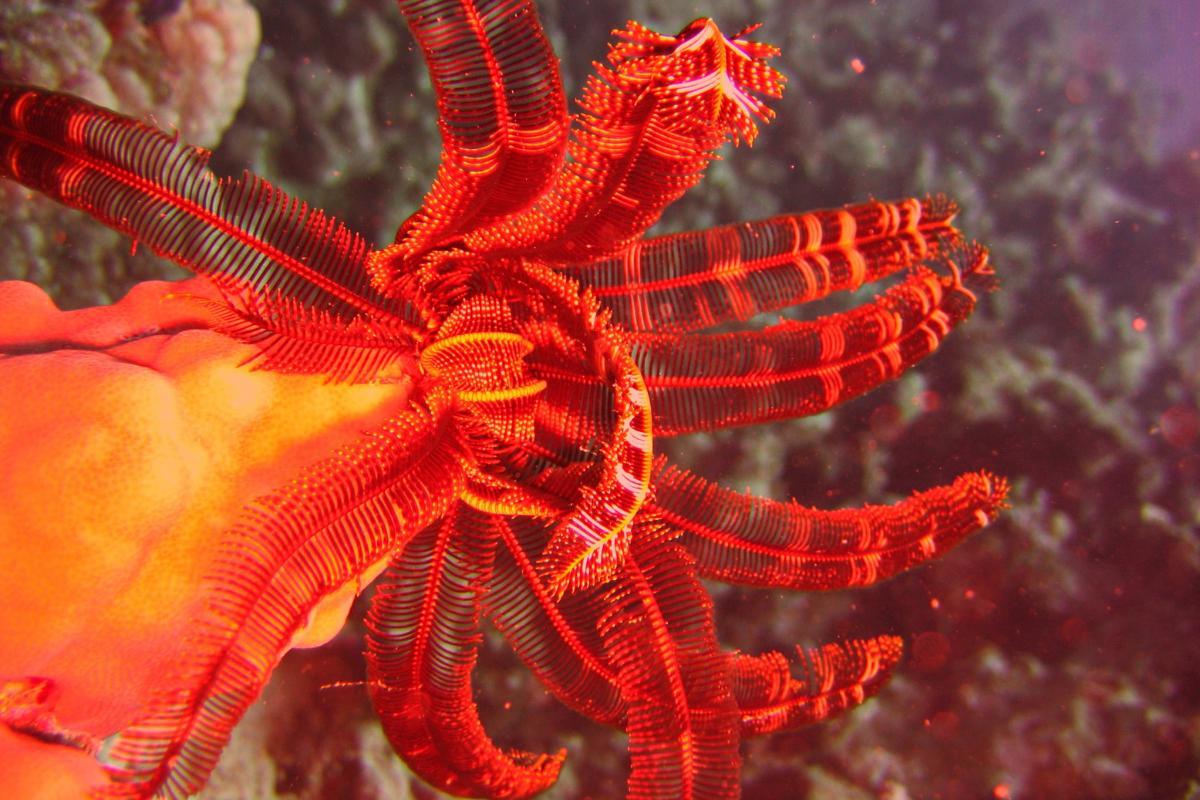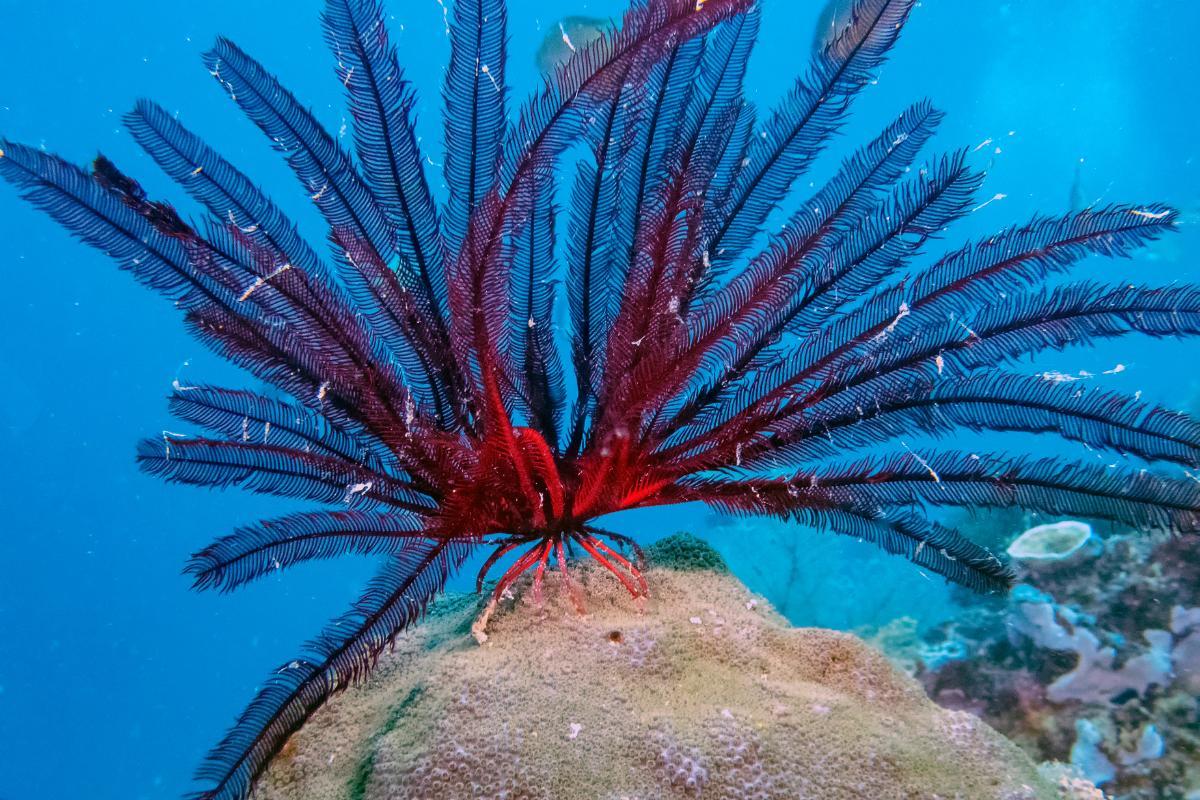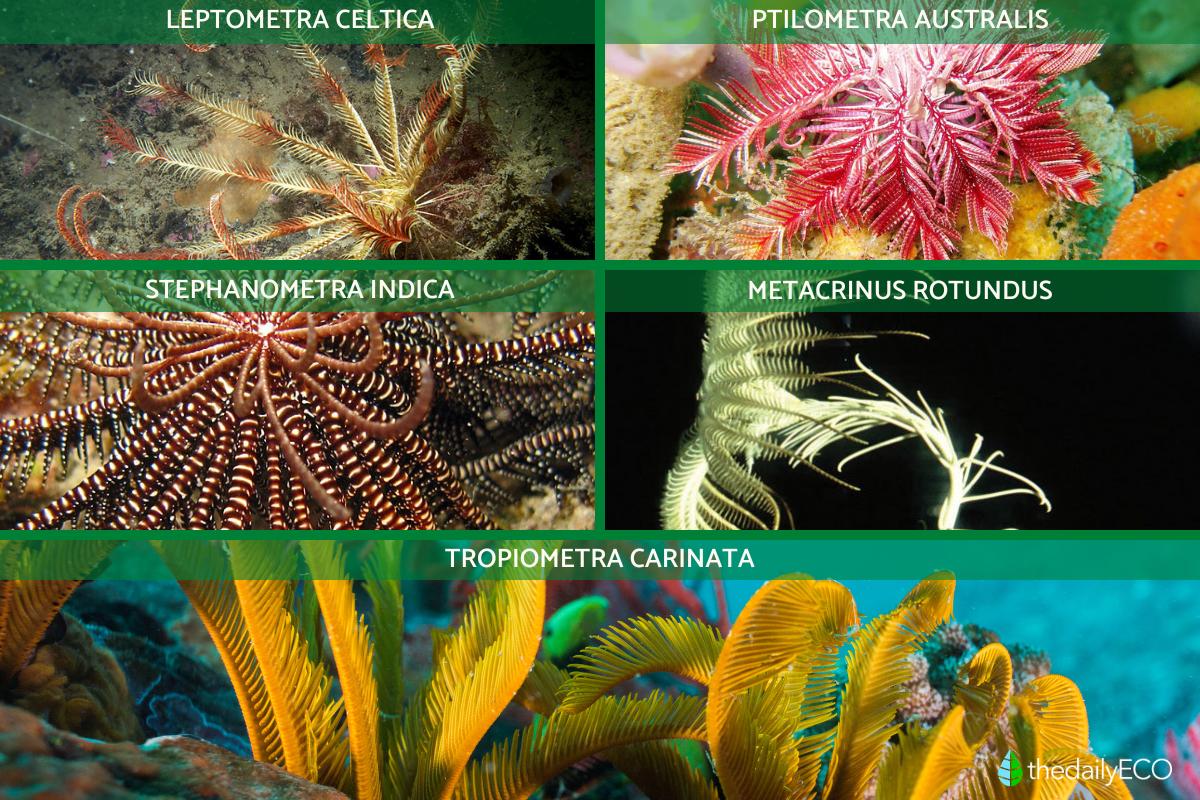What Are Sea Lilies (Crinoids)?


Sea lilies, often mistaken for plants due to their flower-like appearance, are fascinating marine animals that belong to the echinoderm family, closely related to starfish and sea urchins. With a history spanning over 490 million years, sea lilies have adapted to a variety of deep-sea habitats and developed unique features for survival.
In this article by thedailyECO, we will explore what sea lilies are, their key characteristics, preferred habitats, their reproductive strategies, and examples of different species found across the globe.
What are sea lilies?
Sea lilies, or crinoids, are marine animals belonging to the echinoderm group, which also includes starfish, brittle stars, and sea urchins.
Despite their flower-like structure and name, sea lilies are not plants, but filter-feeding organisms that use feathery arms to capture plankton and other particles from the water.
Crinoids have an extensive fossil record, with their origins tracing back over 480 million years to the Ordovician period. They were once far more diverse and abundant, especially during the Paleozoic era when they formed dense marine communities. However, their diversity sharply declined following the end-Permian extinction, the most severe mass extinction event in Earth's history. Only one group of crinoids is thought to have survived this event, becoming the ancestor of all modern crinoids. Fossil evidence shows that their descendants, the Holocrinidae, first appeared in the Early Triassic.
During the Mesozoic era, crinoids faced competition from other marine animals such as sea urchins. By the Cretaceous period, stalked sea lilies had shifted from shallow coastal waters to deeper environments, likely as a response to predation and environmental changes. Today, most crinoids live in the deep sea, though some free-swimming species, called feather stars, can still be found in shallower waters.
While sea lilies anchor themselves to the seabed, other gelatinous creatures drift freely. Learn more about these pelagic organisms.

Key characteristics of sea lilies
Sea lilies have unique features and behaviors that set them apart from other marine species. Below are some key characteristics of sea lilies:
- Sea lilies have a central body known as the calyx, from which feathery, branched arms extend.
- Although they are typically fixed to the seabed, sea lilies can detach and move if they need to escape a predator.
- To relocate, they break off a small part of their stem, freeing themselves to move away from danger.
- Sea lilies are believed to have first appeared during the Ordovician period, around 490 million years ago.
- There are currently about 700 known species of sea lilies, with some having stalks and others lacking them (stemless species).
- The arms of sea lilies typically range from 1 to 35 cm in length (0.39 to 13.78 inches)- **Stem Length:** The stem can grow up to about 1 meter, depending on the species.
- Sea lilies use their arms and specialized fins to filter plankton and other small food particles from the water.
- Sea lilies are dioecious, meaning they have separate sexes.
- Compared to many other marine animals, sea lilies have a low metabolic rate, which allows them to thrive in deeper waters where food is scarcer.
- Sea lilies have the ability to regenerate lost arms. If an arm is damaged or severed, they can grow it back over time.
- Like other echinoderms, sea lilies have a water vascular system, which is used for movement, feeding, and respiration. This system involves the use of hydraulic pressure to operate tube feet along their arms.
- Many sea lilies are adapted to live at great depths where light is scarce. Their feeding behavior and low metabolic rate are suited to the deep-sea environment, where food is less abundant and conditions are more stable.
- Sea lilies can live for several decades. Some species have been known to survive for over 50 years, with slow growth rates that allow them to persist in stable environments.
- Sea lilies can sense changes in their environment through specialized sensory structures located on their arms. These help them detect water movement, temperature changes, and the presence of food particles.
- Sea lilies reproduce through external fertilization, with males and females releasing gametes into the water. The fertilized eggs develop into free-swimming larvae that later settle to the seabed and begin growing into adult forms.
Want to explore more about the microscopic world that sustains much of marine life? Do not miss this other article on Zooxanthellae.

Habitat and distribution of sea lilies
Sea lilies are primarily found in the deep ocean, with the largest populations in the western Pacific Ocean and along both sides of the Atlantic. Historically, they were much more abundant, especially in shallow marine environments during the Paleozoic era, but today they are largely confined to deep-water habitats.
These animals are most commonly found at depths of 200 meters or more, where they are anchored to the seafloor. Sea lilies favor hard surfaces such as rocks, corals, and other solid seafloor structures, where they can securely attach themselves using their stalks, ensuring stability in the often turbulent deep-sea currents.
In some regions, particularly in the Indo-Pacific and parts of the Atlantic, large concentrations of sea lilies gather, forming dense underwater forests. These colonies create unique and vibrant ecosystems that support a wide range of marine life, including various fish species, invertebrates, and other filter-feeders that depend on the abundant plankton and food particles that the sea lilies capture.
Despite their usually stationary lifestyle, certain species of sea lilies are capable of temporarily detaching from their anchors. They can move through the water by slowly waving their feathery arms, a movement that is both graceful and deliberate.
This ability to relocate allows them to explore new areas in search of better feeding opportunities or to escape potential predators. They can also reposition themselves to optimize exposure to currents that bring food.
Sea lilies are more than just passive filter feeders. Their interactions with their environment are vital for the health of deep-sea ecosystems. Their presence helps cycle nutrients, and their complex habitats provide critical resources for various marine organisms.
Diet of sea lilies
Sea lilies primarily feed on plankton and organic particles suspended in the water. They use their long, feathery arms to capture these tiny particles through a method known as passive suspension feeding.
The arms are coated with mucus, which helps trap plankton, detritus, and other food particles. Additionally, the tube feet along their arms play a crucial role by gently guiding the trapped food toward their mouth, located on the top of their body.
Unlike many other animals, sea lilies lack a true stomach. Once food is captured and moved to the mouth, it passes directly into the esophagus, then into the intestine, where nutrients are absorbed. The remaining waste moves into the rectum and is expelled through the anus, which is uniquely located on the same surface as the mouth, on the top of the body.
Sea lilies are highly efficient filter feeders, but they are also opportunistic, supplementing their diet by scavenging or preying on available food sources. This adaptability allows them to thrive in diverse environments.
Interested in the mechanics of filter feeding? Explore the diverse strategies employed by different animals.
Reproduction of sea lilies
Sea lilies are dioecious, meaning there are distinct differences between males and females. During reproduction, both sexes release their gametes into the surrounding water, where external fertilization takes place. This fertilization produces eggs that hatch into free-swimming larvae. These larvae do not feed and rely entirely on ocean currents to disperse to new areas.
After drifting for a period of time, the larvae eventually settle on a suitable substrate on the seabed. Once they attach, they undergo metamorphosis, transitioning into sessile adults. At this stage, they anchor themselves securely to the seafloor, beginning their adult life as filter feeders and continuing the cycle of reproduction.
A notable feature of sea lilies is their ability to regenerate. If they lose an arm or even their crown, they can rebuild these structures. This regenerative capability not only enables them to recover from physical damage but also ensures they can maintain their reproductive functions, contributing to the survival and longevity of their species.

Examples of sea lilies
Sea lilies are a diverse group of marine animals found in various oceanic regions around the world. Each species exhibits unique characteristics that help them thrive in different environments. Below are a few examples of species of sea lilies, each with distinct features:
- Leptometra celtica: found in the Atlantic Ocean, this species has 10 arms, each measuring 7–10 cm in length. The arms are supported by well-developed lateral branches, enhancing its feeding efficiency.
- Passion flower feather star (Ptilometra australis): native to the southeastern coasts of Australia, this species features 18–20 arms, each bordered with pinnules, which help capture food particles from the water.
- Stephanometra indica: commonly found in the Indo-Pacific region, this species has arms that fan out in two parallel planes, creating a fan-like structure ideal for filtering plankton.
- Japanese sea lily (Metacrinus rotundus): inhabiting the west coast of Japan, this species resembles a feather duster. It features a central mouth surrounded by a crown of branched arms, which are used for both feeding and creating a unique, delicate appearance.
- Elegant feather star (Tropiometra carinata): this species possesses 10 arms, which can grow up to 18 cm in length. Its arms are adapted for effective filter feeding in deeper waters.
Explore the diverse communities that thrive on the ocean floor, including another fascinating group of sessile organisms.

If you want to read similar articles to What Are Sea Lilies (Crinoids)?, we recommend you visit our Biodiversity category.
- Sibona, S. (2022). The sea Lily. UnderwaterTales. https://www.underwatertales.net/en/2022/02/22/the-sea-lily/
- Encyclopedia. (2005). Sea Lilies and Feather Stars: Crinoidea. https://www.encyclopedia.com/science/encyclopedias-almanacs-transcripts-and-maps/sea-lilies-and-feather-stars-crinoidea
- Ryklief, R. (sf). Sea Lily (Crinoidea). OceanInfo. https://oceaninfo.com/animals/sea-lily/#h-reproduction









